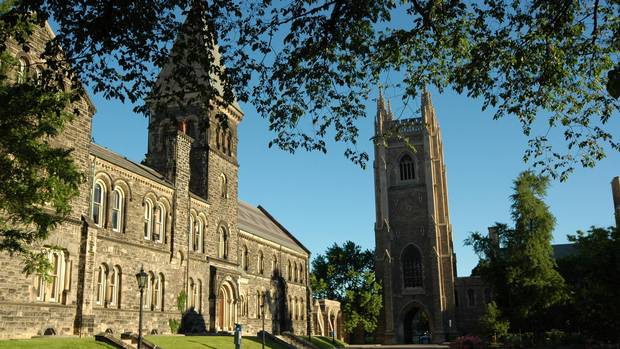Canadian universities are holding their own in the face of increasing competition from postsecondary institutions around the world, the latest results in the Times Higher Education (THE) World University Rankings reveal. With 29 more countries and six million more papers considered in this year’s assessment than in 2014, three Canadian institutions kept their spots in the top 50, and others saw jumps in their position further down the tables.
“When you look at these rankings, you know that we don’t enjoy the same kind of resources that others do. In terms of delivering with the resources we have, there is reason to be proud in this country,” said Suzanne Fortier, the principal of McGill University.
There was little movement within the top 3 Canadian universities this year: The University of Toronto moved up one place to No. 19, while the University of British Columbia and McGill moved marginally to come in at No. 34 and No. 38, respectively.
In a year where much changed about the scope considered by the rankings criteria, small changes likely don’t indicate underlying issues, said John Gill, the editor of Times Higher Education.
As always, the top 10 are dominated by perennial winners Stanford, Oxford, Cambridge, MIT and Harvard. And as has been the case since 2012, the No. 1 spot belongs to the California Institute of Technology. Still, other countries are making ambitious and strategic investments that should make Canada assess its higher-education strategies.
“There has been a lot of angst in recent years over funding for basic research in Canada, and we’d caution very strongly that if you don’t invest in science, it will have an effect,” Mr. Gill said.
For the first time in a decade, a university outside of the U.S. or Britain won a spot in the top 10, with ETH Zurich – which is devoted to science, engineering and management – coming in at No. 9 and Harvard dropping to No. 6 from No. 2. The jump is due to massive investments in research, a strategy also adopted by Germany, which saw eight more of its postsecondary institutions make the top 200 this year.
It’s up to Canada to decide whether to adopt a model like Germany’s Excellence Initiative, which focuses its research funds on a group of elite institutions. “Clearly there are implications, a broad base of institutions are not getting that money,” Mr. Gill said.
For emerging economies, simply expanding access is a key goal. This year, the rankings increasingly reflect the money and attention these countries’ governments are paying to the higher-education sector. THE considered more research from non-English-speaking universities, and institutions from Malaysia, Indonesia, Ghana and Nigeria appear in a table that has grown from 400 to 800 schools.
“The demand to be ranked is at least as big as the demand to rank. Once you start to rank, it’s a problem if you’re not there,” said Alex Usher, the president of Higher Education Strategy Associates, a Canadian company that tracks changes to education systems around the world. “Universities are being told by their governments, ‘We want to see you rise in the rankings, that’s how we know that you are quality.’”
In the 12 years since THE started its first rankings system, other categories and companies have proliferated, from universities under 50 years old, to those that are most innovative and to regional rankings.
Each system has slightly different criteria. THE awards 60 per cent to the number, impact, income and reputation of research, and gives 30 per cent to teaching measures, such as the number of degrees granted. The Shanghai Ranking focuses on research, and especially on the number of alumni and faculty who have won Nobel or Fields prizes and have published in major journals. QS Rankings gives 40 per cent to academic reputation, and 20 per cent each to citations and the student-faculty ratio, with smaller percentages for other categories.
“It’s very difficult to look at thousands of universities around the world and say, ‘This is the yardstick I’m going to use to assess them,’” said Feridun Hamdullahpur, president of the University of Waterloo, which was ranked between 200 and 250 on THE World University Rankings in past years but came in at No. 179 this year. “That’s a very healthy jump. Canadian institutions are doing very well. We need to invest more if we don’t want to see a wider gap.”
Canada’s numbers should persuade governments that the sector requires continuing support if it is to maintain its performance, said Meric Gertler, the president of the University of Toronto.
“I’m delighted that we are still in the Top 20. In many fields, we are competitive with the private universities. But it’s becoming more and more difficult to maintain that competitiveness because of the multiples of funding per student they have compared to us,” he said.
SIMONA CHIOSE – EDUCATION REPORTER
The Globe and Mail
Published Wednesday, Sep. 30, 2015 6:00AM EDT
Last updated Wednesday, Sep. 30, 2015 5:15PM EDT

